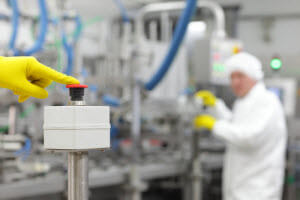Quality Assurance vs. Quality Control: Which is Right for You?
Quality assurance (QA) and quality control (QC) can help manufacturers create great products. But contrary to popular belief, QA and QC aren’t the same. Each of these processes is designed to improve specific stages of the manufacturing process.
Read on to learn more about the difference between quality assurance and quality control.
Quality Assurance
 Quality assurance monitors production operations and helps to improve the manufacturing process and prevent defects in the finished product. Common QA tasks include process planning, checklists, and systems operation audits.
Quality assurance monitors production operations and helps to improve the manufacturing process and prevent defects in the finished product. Common QA tasks include process planning, checklists, and systems operation audits.
Everyone on the company’s production team is responsible for QA. This means that anyone who comes in contact with the product in any part of the production process must ensure that the product being created meets the appropriate standards.
QA can streamline manufacturing processes and have systems operate more efficiently. As a result, QA also helps to increase production revenue and minimize overall operation costs.
Quality Control
Quality control is a process that ensures products meet all company and government standards before entering the market. QC tasks are performed when the development and creation of a product is complete. These tasks consist of inspecting and testing the finished product.
 Companies designate a specific team that’s solely responsible for QC. This team will look over the finished items and test each one for errors and defects.
Companies designate a specific team that’s solely responsible for QC. This team will look over the finished items and test each one for errors and defects.
Overall, QC is meant to benefit the customer. Ensuring that all finished products are compliant with every appropriate standard helps to make sure that your customers get the high-quality product they need. This can lead to repeat business, a growing consumer base, and a better reputation for your company.
On top of that, QC can help your manufacturing company to avoid product recalls due to safety issues or improperly constructed parts. Recalls are known to be costly for many businesses. For example, CNN Money reported that General Motors spent $4.1 billion in repairs, victim compensation, and other expenses when 30.4 million of its cars and trucks were recalled in 2015.
Quality Assurance vs. Quality Control
QA and QC are beneficial to all parts of production, from start to finish. That’s why it’s best to implement both QA and QC tasks.
As stated, performing both QA and QC processes benefits your company and your customers. When QA audits and checklists are implemented, problems in production are spotted and resolved more frequently, resulting in a more seamless and efficient manufacturing process as well as fewer defects in the finished product.
When you add QC inspections and tests to your processes, you can guarantee that the product your customer gets is of the highest quality to ensure complete consumer satisfaction.
QA and QC may be two different processes, but when used together, both can help your company to produce better products, minimize costs, and improve customer retention rates.
For more tips on how to improve your manufacturing company, check out CPV Manufacturing’s blog.
